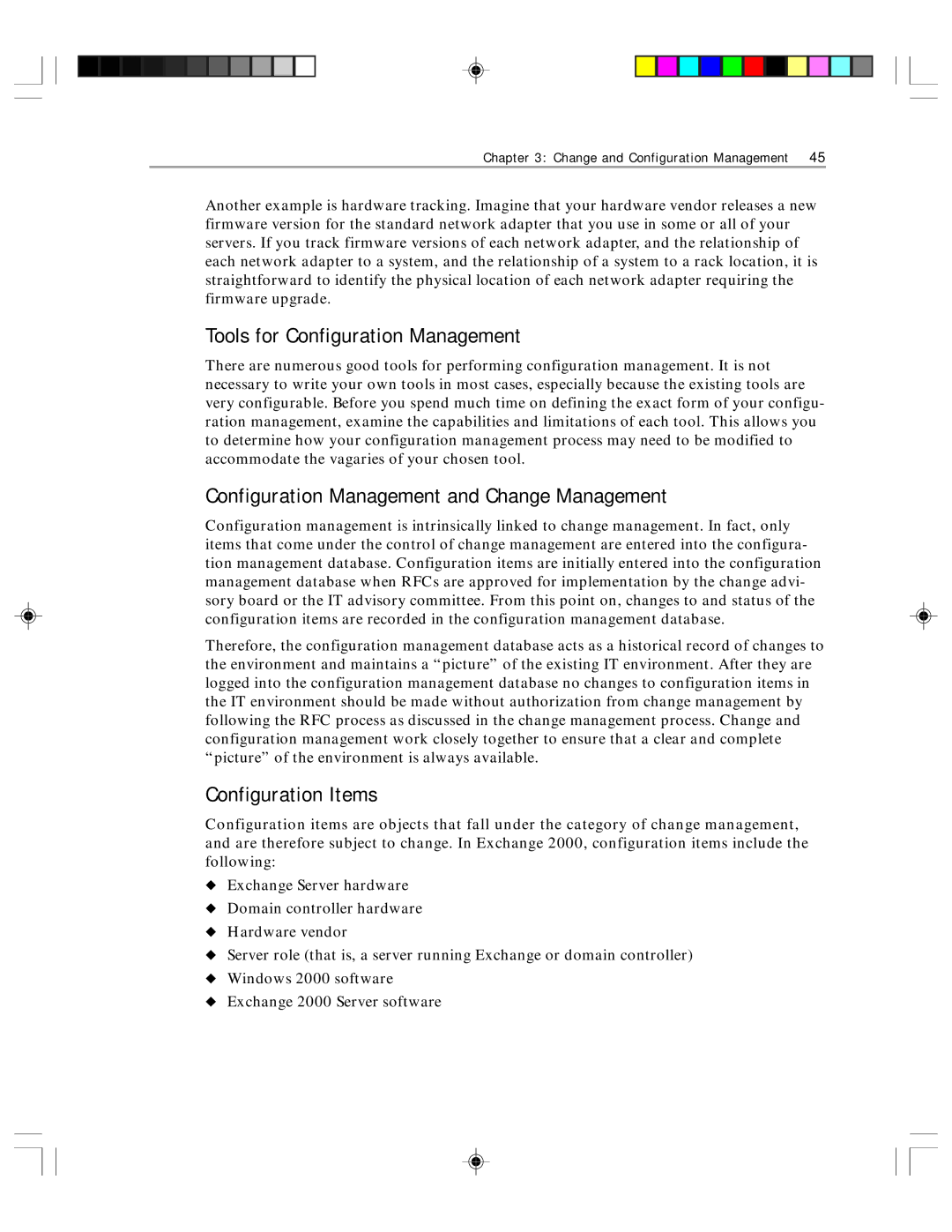
Chapter 3: Change and Configuration Management 45
Another example is hardware tracking. Imagine that your hardware vendor releases a new firmware version for the standard network adapter that you use in some or all of your servers. If you track firmware versions of each network adapter, and the relationship of each network adapter to a system, and the relationship of a system to a rack location, it is straightforward to identify the physical location of each network adapter requiring the firmware upgrade.
Tools for Configuration Management
There are numerous good tools for performing configuration management. It is not necessary to write your own tools in most cases, especially because the existing tools are very configurable. Before you spend much time on defining the exact form of your configu- ration management, examine the capabilities and limitations of each tool. This allows you to determine how your configuration management process may need to be modified to accommodate the vagaries of your chosen tool.
Configuration Management and Change Management
Configuration management is intrinsically linked to change management. In fact, only items that come under the control of change management are entered into the configura- tion management database. Configuration items are initially entered into the configuration management database when RFCs are approved for implementation by the change advi- sory board or the IT advisory committee. From this point on, changes to and status of the configuration items are recorded in the configuration management database.
Therefore, the configuration management database acts as a historical record of changes to the environment and maintains a “picture” of the existing IT environment. After they are logged into the configuration management database no changes to configuration items in the IT environment should be made without authorization from change management by following the RFC process as discussed in the change management process. Change and configuration management work closely together to ensure that a clear and complete “picture” of the environment is always available.
Configuration Items
Configuration items are objects that fall under the category of change management, and are therefore subject to change. In Exchange 2000, configuration items include the following:
◆Exchange Server hardware
◆Domain controller hardware
◆Hardware vendor
◆Server role (that is, a server running Exchange or domain controller)
◆Windows 2000 software
◆Exchange 2000 Server software
